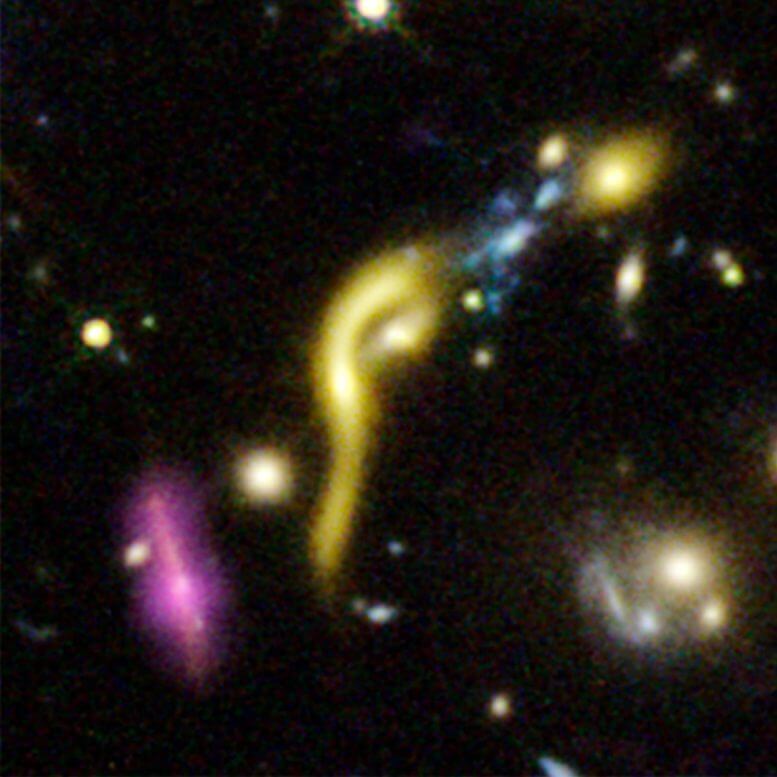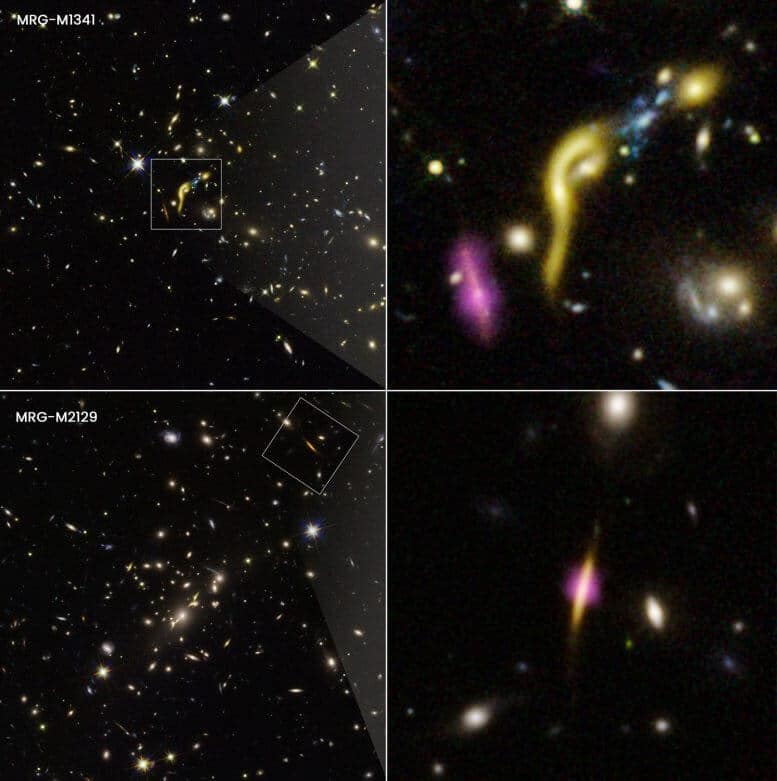When the universe was about three billion years old, only 20% of its current age, it went through the most abundant period of star birth in its history. But when Hubble and ALMA looked at cosmic objects during this period, they found something strange: six ancient massive "dead" galaxies that had run out of the cold hydrogen gas needed to form stars

"Live fast, die young" could be the motto of six ancient massive "dead" galaxies that ran out of the cold hydrogen gas needed to form stars in the early life of the universe. These galaxies lived fast and turbulent lives and formed their stars in a very short time. Then they literally ran out of fuel - actually gas - and they turned off the creation of the stars. Without additional fuel for star formation, these galaxies ran on empty. Why this happened at such an early time is a mystery.
NASA's Hubble Space Telescope, along with the Atacama Large Millimeter/Submillimeter Array (ALMA) in northern Chile, found these strange galaxies by looking back billions of years at the peak of star birth in the universe. To locate the very distant galaxies, the scientists combined the power of Hubble and ALMA with very massive foreground galaxy clusters that served as natural telescopes. Through a phenomenon called strong gravitational repulsion, the immense gravity of a huge galaxy cluster distorts space, and bends and amplifies the light from objects in the background. When an ancient, massive and very distant galaxy is behind such a cluster, it appears very stretched and magnified, and astronomers can study details that would otherwise be impossible to see.

When the universe was about three billion years old, only 20% of its current age, it went through the most abundant period of star birth in its history. But when Hubble and ALMA looked at cosmic objects during this period, they found something strange: six ancient, massive "dead" galaxies that had run out of the cold hydrogen gas needed to form stars.
Without additional fuel for star formation, these galaxies simply ran on empty. The findings are published in the journal Nature.
"At this stage of our universe, all galaxies have to make a lot of stars. This is the peak of the star formation period," explained lead author Kate Whittaker, a senior lecturer in astronomy at the University of Massachusetts, Amherst. Whittaker is also an adjunct faculty member at the Cosmic Dawn Center in Copenhagen, Denmark. "So what happened to all the cold gas in these galaxies so early?"
This study is a classic example of the harmony between Hubble and ALMA observations. Hubble pointed out where in the galaxies the stars exist, and showed where they were formed in the past. By detecting the cold dust that acts as a replacement for the cold hydrogen gas, ALMA showed astronomers where stars could form in the future if there was enough gas.
Whittaker offers several possible explanations: “Did a supermassive black hole at the center of the galaxy ignite and heat up all the gas? If so, the gas may still be there, but now it's hot. Or he was eliminated and is now prevented from being added back to the galaxy. Or maybe the galaxy used it all, and the supply stopped? These are some of the open questions that we will continue to investigate with new observations in the future."
More of the topic in Hayadan:

4 תגובות
Maybe these are particularly dense areas where there were super suns. Huge windshields have a short life.
One of the strangest things about theories
is that when you believe that the theory is the correct one because of the phenomenon of this belief
So even when things don't work out, solutions are invented
in order to hold the theory
For example
dark matter
or dark energy
And as in our case in this article
Sometimes problems that arise are ignored
as if they do not exist
Like for example not long ago they discovered that the wavelengths and their intensity change
That is, what reaches us is not what comes out of the source
Which creates a problem in the rate and calculation of the distances and the size of the bodies or even the materials
And they also discovered recently that there is a return due to the light due to star dust or something similar
(gas)
The thing that causes not knowing the exact location in the cosmic space of the examined objects
But who cares?
After all, they believe in the theory
And it is known that faith is not a scientific matter
There is a phenomenon of a black hole that creates a quasar - which is the plates of a stream of particles and a beam of huge plasma, which throws all the gas away from the galaxy into space and disperses it. A black hole in a galaxy can do this to the same galaxy and a quasar in another galaxy can also do this to a neighboring galaxy.
Are these the 'Old Age' galaxies discovered in 'End of the Universe War'? One of the theories of planet N says that there are consciousnesses (okay, alien consciousnesses) that "arrange" the universe according to the age and activity level of the galaxies, that these consciousnesses, unlike ours, are able to recognize and put into their categories the arrangement of the universe (our consciousness also arranges the universe By categories, ask Kant).